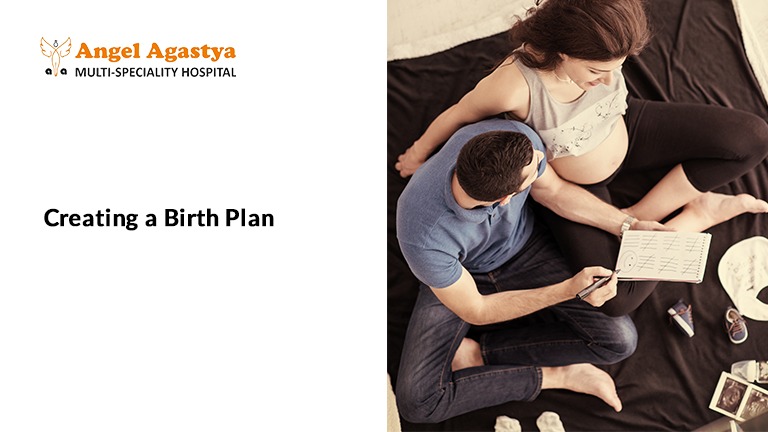Preparing for the Most Empowering Day of Your Life!
Bringing a new life into the world is a magical experience, but without proper planning, it can also feel overwhelming. Wouldn’t you want to enter the delivery room feeling informed, confident, and in control? Whether you’re a first-time parent or experienced in childbirth, this birth planning guide will help you prepare for a smooth, safe, and empowering birth experience.

INTRODUCTION
The arrival of a new baby is a momentous occasion, filled with joy, anticipation, and a touch of nervousness. Creating a thoughtful and personalized plan can make the birthing experience smoother, more positive, and empowering. Whether you’re a first-time parent or have been through childbirth before, using a Birth Planning Guide ensures you feel prepared, informed, and in control during this life-changing event.
A Birth Planning Guide helps you explore and document your preferences for labor, delivery, pain relief, support persons, and newborn care. It bridges communication between you and your healthcare team, helping everyone stay aligned with your wishes. From choosing the right birthing environment to understanding your options during labor, every detail matters.
This comprehensive Birth Planning Guide also covers important aspects like selecting your OB-GYN or midwife, preparing for postpartum care, packing your hospital bag, and creating a flexible birth plan that adapts to unexpected changes. With clarity and preparation, you can approach childbirth with calm and confidence.
Remember, the goal isn’t perfection—it’s feeling empowered to make the best choices for you and your baby. Start planning early, ask questions, and trust your instincts. Your journey into parenthood begins with a plan that puts you first.
Understanding Birth Planning: Why It Matters
A thoughtfully crafted Birth Planning Guide helps you feel more in control, reduces anxiety, and ensures your healthcare team understands your needs and preferences. While flexibility is essential, a solid plan prepares you for different scenarios and allows for informed decision-making throughout the process.
Benefits of a Birth Plan
- Communicates your preferences clearly to healthcare professionals
- Reduces uncertainty and stress during labor
- Helps you feel empowered and informed throughout the delivery
By using a Birth Planning Guide, you and your partner can navigate the big day with confidence and calmness.
Educating Yourself About Childbirth

Knowledge is power, especially when it comes to childbirth. Taking prenatal or childbirth classes can equip you with essential information, reduce fear, and prepare both mind and body for labor and delivery.
Understanding the Stages of Labor
Understanding the stages of labor is one of the most important parts of preparing for childbirth—and a good Birth Planning Guide always includes it. When you know what to expect, it’s easier to feel calm, confident, and empowered during delivery.
- Early Labor: Mild, irregular contractions begin, and your cervix slowly starts to open. This stage can last hours or even days.
- Active Labor: Contractions become stronger and more regular. Your cervix dilates faster, and it’s usually the right time to head to the hospital.
- Transition Phase: This is the most intense stage, with powerful contractions and full cervical dilation. It’s tough, but short.
- Pushing: Time to meet your baby! You’ll push with each contraction until your baby is born.
- Delivery of Placenta: The final step—your body delivers the placenta.
Your Birth Planning Guide should account for your coping strategies in each of these stages.
Choosing Your Healthcare Provider and Birth Setting

1. Selecting the Right Healthcare Provider
Depending on your preferences, choose from:
• OB-GYN: Ideal for high-risk pregnancies and medical interventions
• Midwife: More natural, holistic approach to childbirth
• Doula (दाई):Provides emotional and physical support
2. Deciding on a Birth Setting
Each option has its pros and cons:
- Hospital Birth: Best for high-risk pregnancies, access to medical care
- Home Birth: Suitable for low-risk pregnancies with a trained midwife
- Birth Center: A home-like setting with medical professionals on standby
3.Touring the Facility & Understanding Policies
Visit your chosen hospital or birth center to learn about:
- Birthing options (water birth, movement-friendly spaces)
- Pain relief options (epidurals, IV medications)
- Visitor policies & postpartum care services
Creating Your Birth Plan

This is where your Birth Planning Guide becomes truly personalized. Include preferences while staying open to changes.
1. Labor Preferences
- Preferred labor positions (walking, squatting, side-lying)
- Pain relief methods (epidural, natural methods, IV medications)
- Fetal monitoring preferences (continuous vs. intermittent)
- Environment (dim lighting, music, aromatherapy)
2. Delivery Preferences
- Who can be present (partner, family, doula)
- Episiotomy preferences (avoiding unless necessary)
- Delayed cord clamping for newborn health
- Immediate skin-to-skin contact for bonding
3. Postpartum Preferences
- Breastfeeding vs. formula feeding
- Rooming-in with the baby vs. nursery care
- Postpartum pain relief preferences
4. Flexibility is Key!
Your Birth Planning Guide should include a note that plans may change depending on circumstances. The goal is always a healthy outcome for both mother and baby.
Preparing for Postpartum Recovery

1. Postpartum Care for Mother
- Physical Recovery: Vaginal bleeding, perineal healing, postpartum cramping
- Emotional Health: Watch for baby blues or postpartum depression
- Nutrition & Hydration: Eat iron-rich foods, stay hydrated
2. Newborn Care Essentials
- Feeding: Breastfeeding vs. formula feeding options
- Diapering: Change diapers every 2-3 hours
- Sleeping: Safe sleep practices to reduce SIDS risk
3. Lactation Support
- Work with a lactation consultant for latching techniques
- Join breastfeeding support groups for guidance
- Include this in your Birth Planning Guide if you plan to nurse.
4. Building a Strong Support System
- Ask for help! Family and friends can assist with chores & meals
- Consider a postpartum doula(दाई) for additional support
Packing Your Hospital Bag
Here’s what to include in your Birth Planning Guide for a fully stocked hospital bag:

Essentials for Labor & Delivery
- Comfortable Clothing (robe, loose dresses)
- Toiletries (toothbrush, hairbrush, lip balm)
- Entertainment (books, music, magazines)
- Snacks & Drinks (if allowed)
Postpartum Essentials for Mom
- Maternity pads, nursing bras
- Comfy pajamas & slippers
- Nipple cream for breastfeeding
Essentials for Baby
- Newborn clothes (onesies, socks, hats)
- Diapers & wipes
Final Thoughts on Birth Planning
Creating a Birth Planning Guide gives you confidence, clarity, and control over one of the most significant experiences in life. While no birth can be 100% predictable, preparing well and being flexible allows you to embrace the experience—no matter how it unfolds.
Conclusion
Planning for childbirth isn’t just about logistics—it’s about creating a calm, informed, and empowering experience for yourself and your baby. Your Birth Planning Guide should reflect your personal values, medical needs, and emotional preferences. From choosing your birth team and setting, to managing labor pain and preparing for postpartum recovery, every decision you make shapes your journey.
As you approach your due date, revisit your plan with your partner and doctor to ensure everyone is aligned. Stay informed, trust your instincts, and remember—your body is beautifully designed for this moment. The right planning will help you feel ready, resilient, and fully present to welcome your baby with joy and love.
Frequently Asked Questions (FAQs)
What is a birth planning guide and why is it important?
A Birth Planning Guide is a written document outlining your preferences for labor, delivery, and postpartum care. It helps you communicate clearly with your healthcare team, reduce anxiety, and feel more prepared.
When should I start creating my birth plan?
Begin drafting your Birth Planning Guide around the second trimester (20–24 weeks). This gives ample time to explore options, attend classes, and finalize decisions before your third trimester.
What are the top benefits of a birth plan?
- Enhances communication with healthcare providers
- Helps reduce last-minute stress
- Allows for personalized care and decision-making
Can my birth plan change during labor?
Yes, birth is unpredictable. A good Birth Planning Guide emphasizes flexibility and acknowledges that medical decisions may need to be made quickly to ensure safety.
What pain relief options should I include?
Consider both medical and natural methods, including:
- Epidurals
- Nitrous oxide
- Breathing exercises
- Warm baths and massage
What should I include in my postpartum care plan?
Focus on rest, emotional well-being, nutrition, and having a support system in place. Also include feeding preferences and newborn care details in your Birth Planning Guide.
Should I take childbirth classes?
Absolutely. These classes offer invaluable education on labor stages, delivery methods, newborn care, and pain management techniques.
How can I make my birth more positive?
Stay informed, create a relaxing birth environment, involve a supportive partner or doula, and focus on flexibility. Your Birth Planning Guide will serve as your anchor.
What if things don’t go as planned?
Stay calm and adaptable. Your medical team will prioritize your and your baby’s health. Trust their expertise, and don’t see a deviation from the plan as a failure—it’s part of the journey.
Can a birth planning guide help my partner or support person?
Yes, absolutely. A Birth Planning Guide provides clear instructions and expectations for your partner or support person. It helps them feel more involved, prepared, and confident in offering the right support when you need it most.
By preparing early and thoughtfully using a Birth Planning Guide, you’re not just planning for a moment—you’re shaping a memory that will last a lifetime. Embrace this beautiful journey with knowledge, courage, and love.

